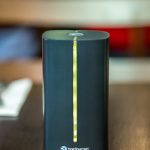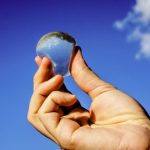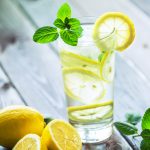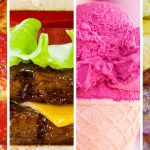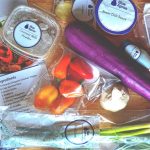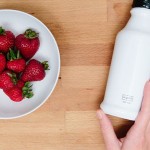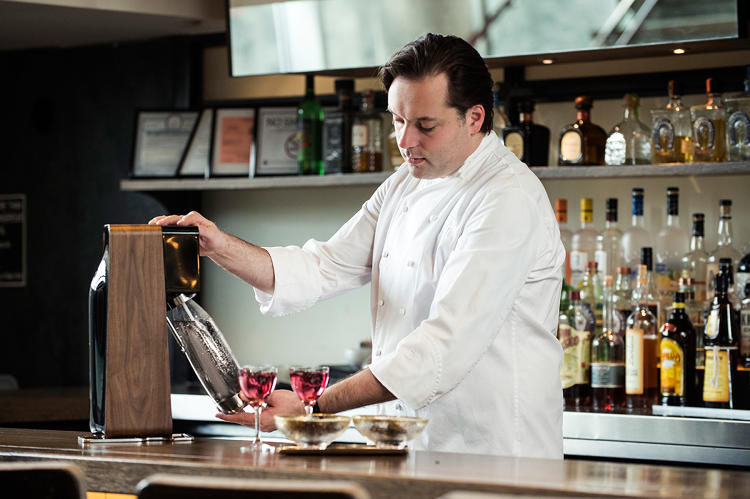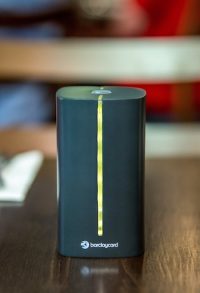In A Bid To Entice Tastemakers, SodaStream Gets A New Look And Gourmet Flavors
The troubled water carbonator company is repositioning its brand, downplaying the “soda” and aiming instead to win the water market.
The streets outside the Gramercy Park Hotel were hushed and still as New York tumbled into a whiteout on the eve of winter storm Juno. But in the hotel’s penthouse bar, cosy with red velvet curtains and brown leather armchairs, the conversation was humming, the glasses clinking, and the drinks disappearing—just not the drinks you might expect.
“The idea for this one that you’re going to drink now: Yuzu and mandarin is a classic combination, a real favorite of mine,” says Michelin-starred chef Paul Liebrandt. “There’s a lot of citrus but not in an acidic way. When you scrape a lemon and you smell, it’s got depth, it smells the way a lemon should. You feel the skin.”
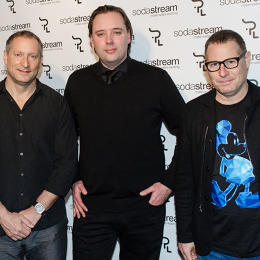
In the same way, he says, the yuzu and mandarin-infused sparkling water now tickling my tongue does “a great job of capturing the essence” of the citrus flavor.
Yuzu Mandarin is one of a dozen “Sparkling Gourmet” flavors that Liebrandt has designed for SodaStream, the Israel-based maker of at-home carbonation systems. Blackcurrant Lime, Raspberry Lychee Rose, Green Apple Coriander—the flavors read like an excerpt from an adventurous cocktail menu. But despite that whiff of indulgence, SodaStream executives are quick to point out that these drinks are low-calorie, all-natural, and guilt-free.
Sugary sodas and artificially flavored diet drinks “belong to the past,” says SodaStream CEO Daniel Birnbaum. Twelve hours after arriving in New York on a red-eye flight he is wide-awake and at ease, dressed down in a gray henley and corduroys. “Consumers today want to drink water. We’re listening. We make water more exciting.”
SodaStream’s initial approach to U.S. marketing emphasized a very different message. The company attempted to replicate its success in Scandinavia by emphasizing its “reduce and reuse” environmental strengths—a message that fell flat with American consumers, despite a Super Bowl ad featuring Scarlett Johansson that gained notoriety for its swipe at leading soda brands (“Sorry, Coke and Pepsi,” the actress purrs as she raises a SodaStream beverage to her lips).
“I wish we had not done the Super Bowl ads,” Birnbaum says. “We were saying, ‘We’re a better soda.’ And suddenly we realized that’s the wrong way to talk about this brand, because what the consumer really wants is water!”
He sips the glass of red wine he has been drinking alongside bubbly Lime Basil and Black Cherry Sassafras concoctions prepared for our tasting. “The environment has been our primary benefit that we communicated until recently. Frankly, Americans don’t much care,” he says. “But Americans do care about their health and wellness.”
Indeed, American consumers made very clear that SodaStream’s debut messaging did not resonate. There’s no way to sugarcoat, flavor-infuse, or carbonate it: 2014 was a dud. The company’s most recent quarterly earnings filing reported that U.S. revenues had dropped 40% year over year, from $49.8 million to $29.5 million. In Western Europe, SodaStream’s largest market, revenues were up just 1%.
Investors, who for months had been tracking the stock’s steady decline from a high of nearly $50, sent shares down to the $20 range. Trading has remained at that level ever since.
“They’ve had to eat humble pie this year by completely switching that position and saying, ‘We’re not a soda-maker, we’re a sparkling water,’” says Jonas Feliciano, senior beverages analyst at market research firm Euromonitor International. Bottled water has a “health halo” effect, Feliciano says; placing products “in the bottled water aisle versus the soda aisle really helps performance.”
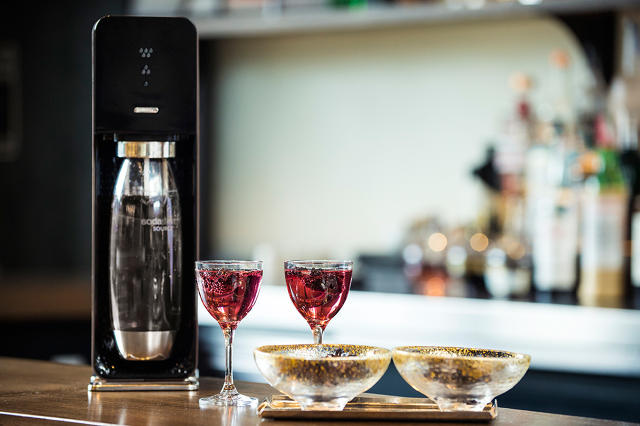
To prepare for that shift, SodaStream has made small but significant changes to its brand positioning. The prior logo emphasized “Soda,” rendering those letters in bold. A redesign shifted the accent to “Stream,” while introducing a new tagline: “Water made exciting.”
In parallel, the company has ditched its squat flavor bottles, replacing them with taller, more elegant containers, and shipped out stylish home carbonators that are quieter and easier to use. Gone is the cheap plastic, the loud fart of gas; the new machines look at home on Corian countertops and pump in CO2 with a ladylike fizzle.
Yet SodaStream has set expectations low for its upcoming earnings announcement, scheduled for February 24. Before seeing the impact of its new strategy, the company will need to secure broader distribution at health and wellness-oriented stores like Whole Foods. Plus, there are threats on the horizon: Pod-based coffee-maker Keurig has promised to introduce a home carbonation system of its own, in partnership with Coca-Cola, this fall.
Birnbaum dismisses Keurig Cold as “vaporware” and touts SodaStream’s continued investments in technology and innovation—a machine that can carbonate any liquid, for example, is now undergoing user testing.
“I believe that’s going to be a must in every bar and restaurant,” says chief innovation and design officer Yaron Kopel, also on hand for the tasting. He envisions Campari-based drinks infused with effervescence.
In the meantime, Liebrandt is devising cocktails to go with his flavor line. Four will be served at a party the following night, all plays on classic drinks—a Mandarin Negroni, a Green Apple Cucumber Gimlet. Liebrandt sounds most excited about a cocktail featuring Green Mango Coconut, a flavor that is still in development.
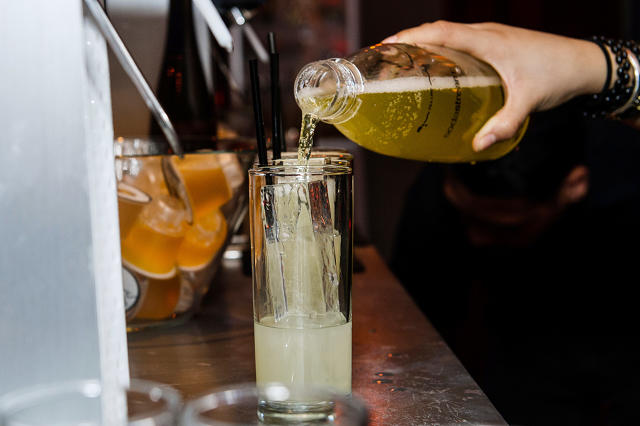
“Mango, when it’s fully ripe, can be so overwhelming. The green mango adds that zip,” he says, his voice lilting with echoes of his London hometown. “You pair it with the coconut, which has got that fat, with a round, sour finish—that one is beautiful with 50-year-old, aged rum. The aloe vera, the age on the rum—it’s fantastic.”
With recipes like that, SodaStream may indeed be on the right path for a turnaround. Value investor Whitney Tilson, initially a SodaStream skeptic, has been won over by the company’s fundamentals. “SodaStream’s woes in the U.S. aren’t due to it being a fad, but rather poor execution, especially in the areas of distribution, inventory management, and marketing,” Tilson said in a presentation. Taking a long-term view, he observed that in developed Sodastream markets, like Switzerland, the company’s operating margins are attractive, exceeding 25%. SodaStream may never become a beverage industry giant, Tilson says, but “So what? Then we are getting a bargain on a profitable, growing niche business with higher barriers to entry.”
“Niche” is a word that Birnbaum approaches with caution. “This is not for everyone—yet,” he says. The company’s first set of targets: “Folks who are more connected with their lifestyle, more sensitive to design, who have the self-confidence to change a habit.” Birnbaum believes those elusive “opinion-leader” consumers will be able to boost SodaStream’s U.S. market penetration, currently stuck at 1%.
“Habits are pretty strong in life,” he says. “We’re telling people to change their habits. We can see SodaStream in every household in America. But we have to start from the people who lead the way.”
(279)


